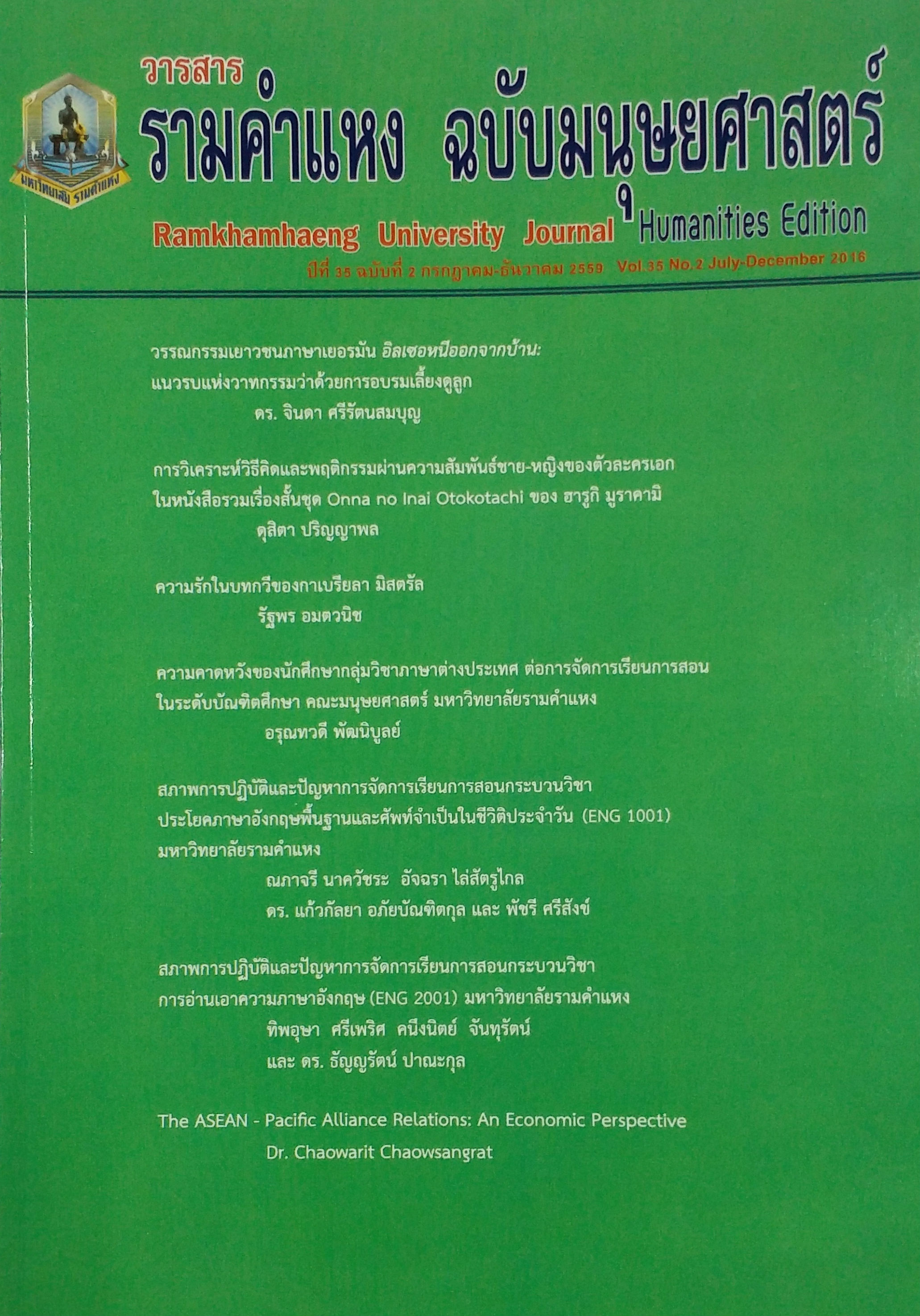ฟิลิปปินส์: ภาพสะท้อนความเป็นลูกผสมของอาณานิคมสเปนในลาตินอเมริกา แห่งเอเชียตะวันออกเฉียงใต้ The Philippines: A Reflection on “Mestizaje” of Spanish America in Southeast Asia
Main Article Content
บทคัดย่อ
บทคัดย่อ
ภูมิภาคลาตินอเมริกาซึ่งมีอดีตอาณานิคมสเปนเป็นส่วนหนึ่งและภูมิภาคเอเชียตะวันออกเฉียงใต้นั้นดูเหมือนจะห่างไกลกันคนละซีกโลกแต่หากมีอยู่จุดหนึ่งของเอเชียตะวันออกเฉียงใต้ ที่แสดงให้เห็นถึงความคล้ายคลึงกันอยู่ไม่น้อย นั่นก็คือ ประเทศ ‘ฟิลิปปินส์’ บทความนี้ต้องการที่จะนำเสนอข้อเท็จจริงที่ว่าแม้ภูมิภาคทั้งสองจะห่างไกลกันด้วยระยะทาง ทั้งฟิลิปปินส์และอาณานิคมของสเปนในทวีปอเมริกาอย่างเขตอุปราชแห่งสเปนใหม่ก็ยังมีความเชื่อมโยงและคล้ายคลึงกัน ทว่าก็แตกต่างกันในแง่มุมของประวัติศาสตร์ สังคม ภาษาและ “วัฒนธรรมลูกผสม” (mestizaje) ซึ่งเกิดขึ้นนับตั้งแต่ยุคอาณานิคมสเปนเป็นต้นมาจวบจนมาถึงยุคปัจจุบัน ผ่านการเปรียบเทียบระหว่างอาณานิคมทั้งสองด้วยประเด็นการแบ่งแยกชาติพันธุ์ด้วยเชื้อชาติและ สีผิวที่ผนวกเข้ากับภาษาศาสตร์สังคมภายใต้พลวัตที่เรียกว่า ‘สเปนาภิวัฒน์’ (Hispanization) ที่ทำให้ฟิลิปปินส์ในที่สุดแล้วก็เป็นได้แค่ภาพสะท้อนความเป็นลูกผสมของลาตินอเมริกาที่ไม่เหมือนต้นแบบโดยสมบูรณ์
Abstract
Latin America, where the colonial Spanish America once was established, and the colonial Southeast Asia, apparently, are located in the different corners of the world. However, one area in the colonial Southeast Asia, namely the Philippines, has been found nearly identical to the Spanish American counterpart. This paper examines the commonality of colonial history, hybridized cultures, and sociolinguistic phenomena that took place from the colonial period to the present times between the Philippines and Spanish America, specifically during the ‘New Spain’ era. Despite a very long distance that keeps these two regions apart, the paper provides in-depth perspective and analysis in comparison, showing both similarities and contrasts between the archipelago and the Spanish colonies in the Americas via historical aspects of ethnic stratification and sociolinguistics resulting from the process of ‘Hispanization,’ which led the Philippines into an incomplete reflection of the hybridization found in Latin America.
Article Details

อนุญาตภายใต้เงื่อนไข Creative Commons Attribution-NonCommercial-NoDerivatives 4.0 International License.
ประกาศลิขสิทธิ์จะปรากฏในเกี่ยวกับวารสาร ควรอธิบายสำหรับผู้อ่านและผู้เขียนว่าเจ้าของลิขสิทธิ์เป็นผู้เขียนวารสารหรือบุคคลที่สาม ควรรวมถึงข้อตกลงการอนุญาตเพิ่มเติม (เช่นใบอนุญาตครีเอทีฟคอมมอนส์) ที่ให้สิทธิ์แก่ผู้อ่าน (ดูตัวอย่าง) และควรให้วิธีการรักษาความปลอดภัยหากจำเป็นสำหรับการใช้เนื้อหาของวารสาร


